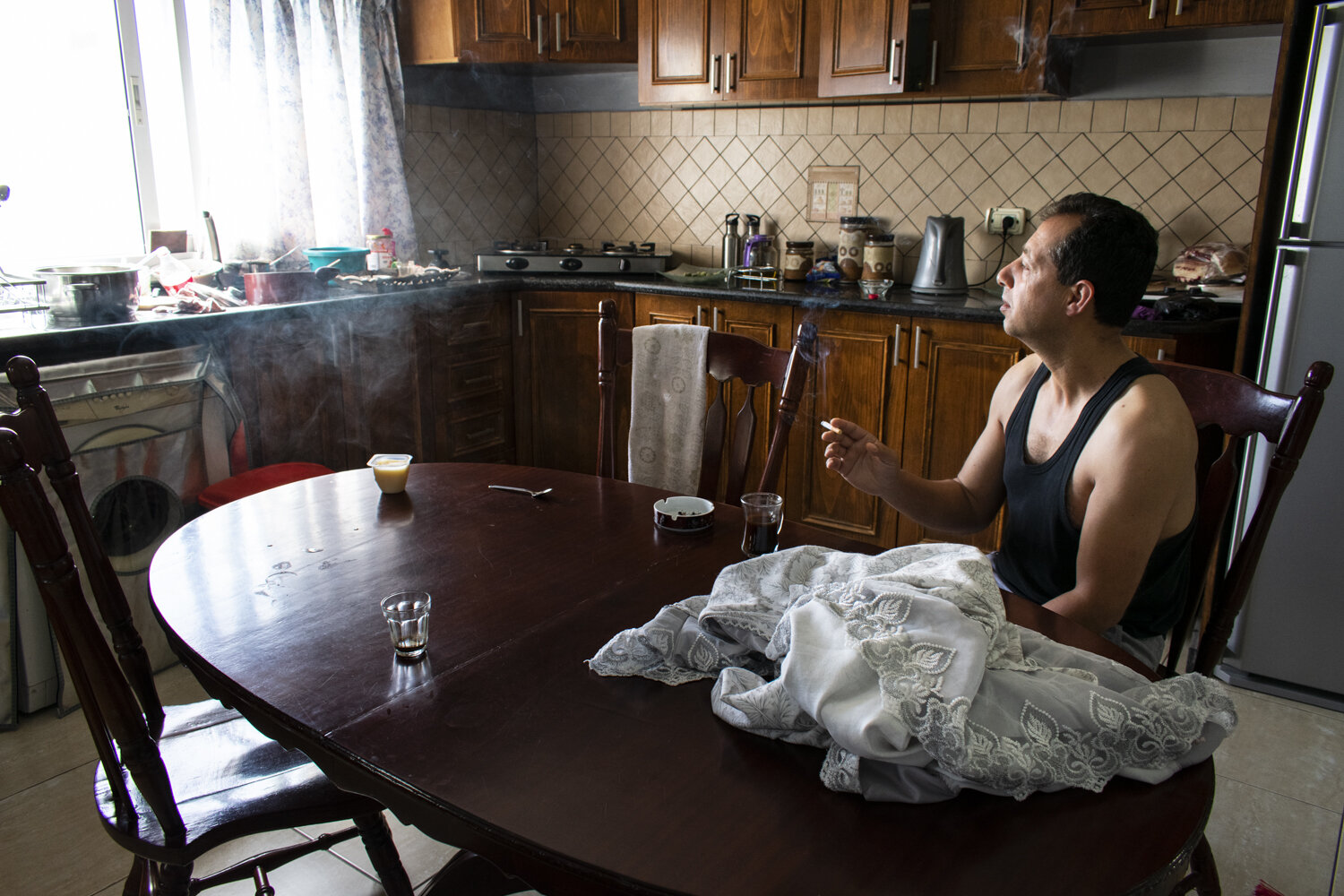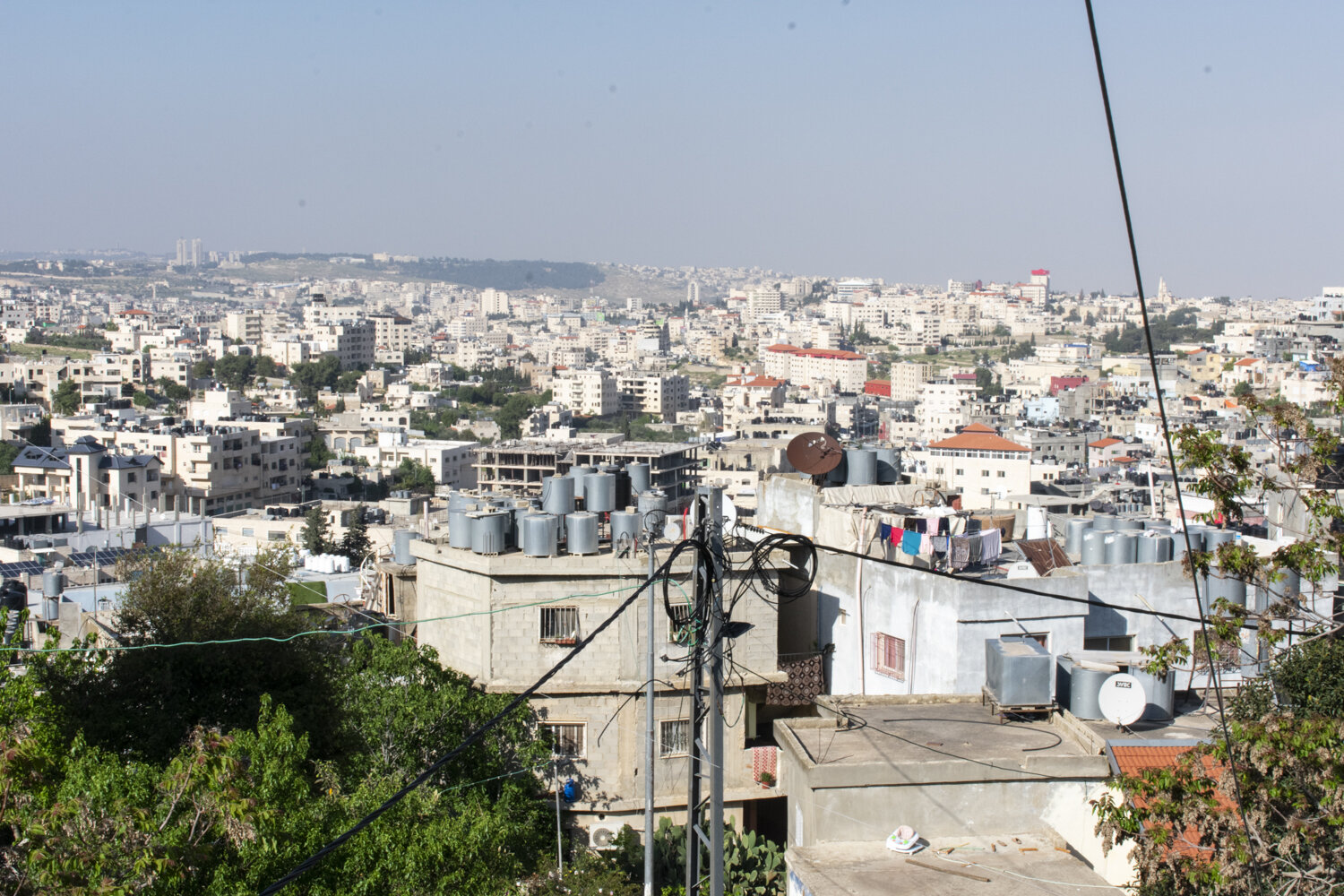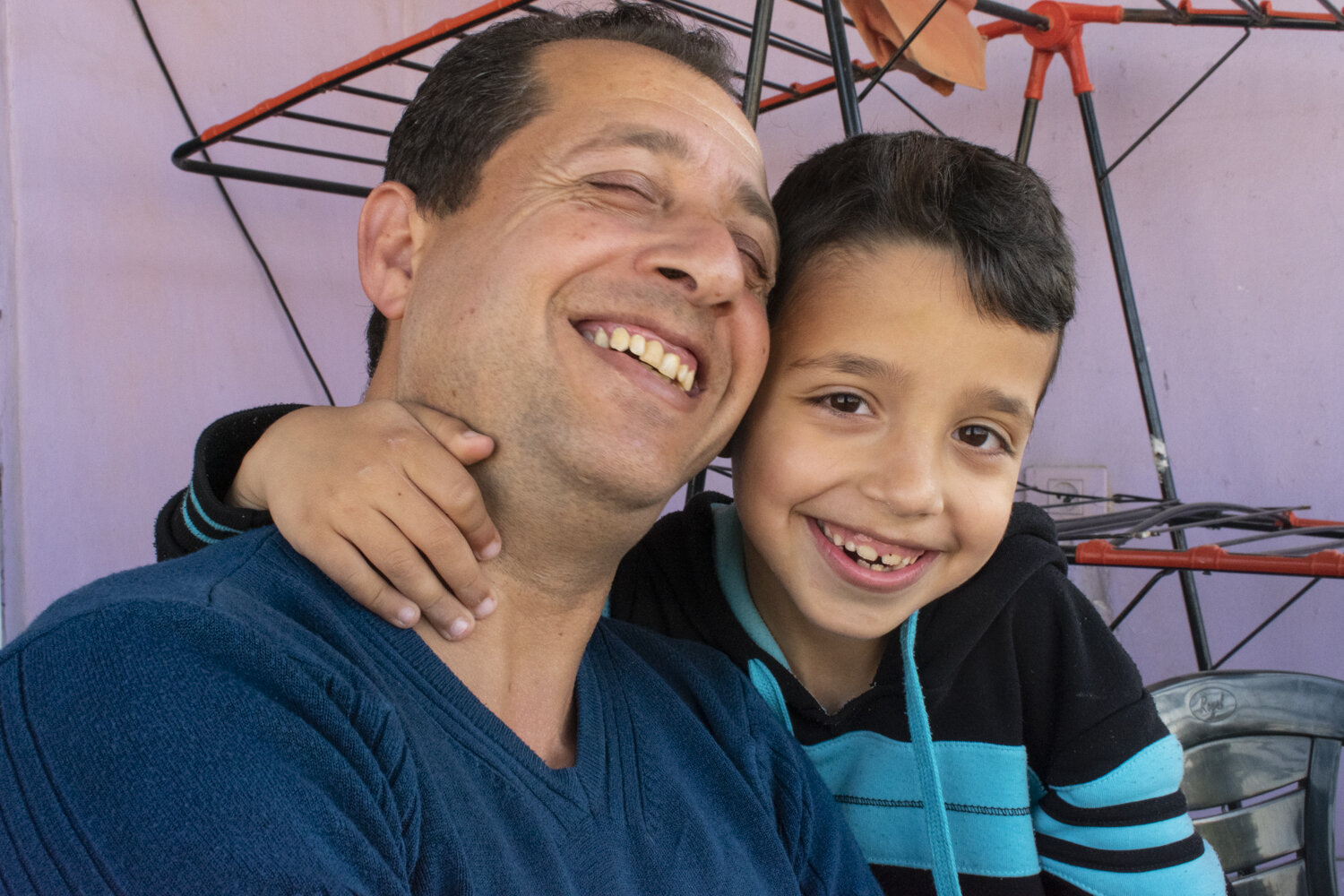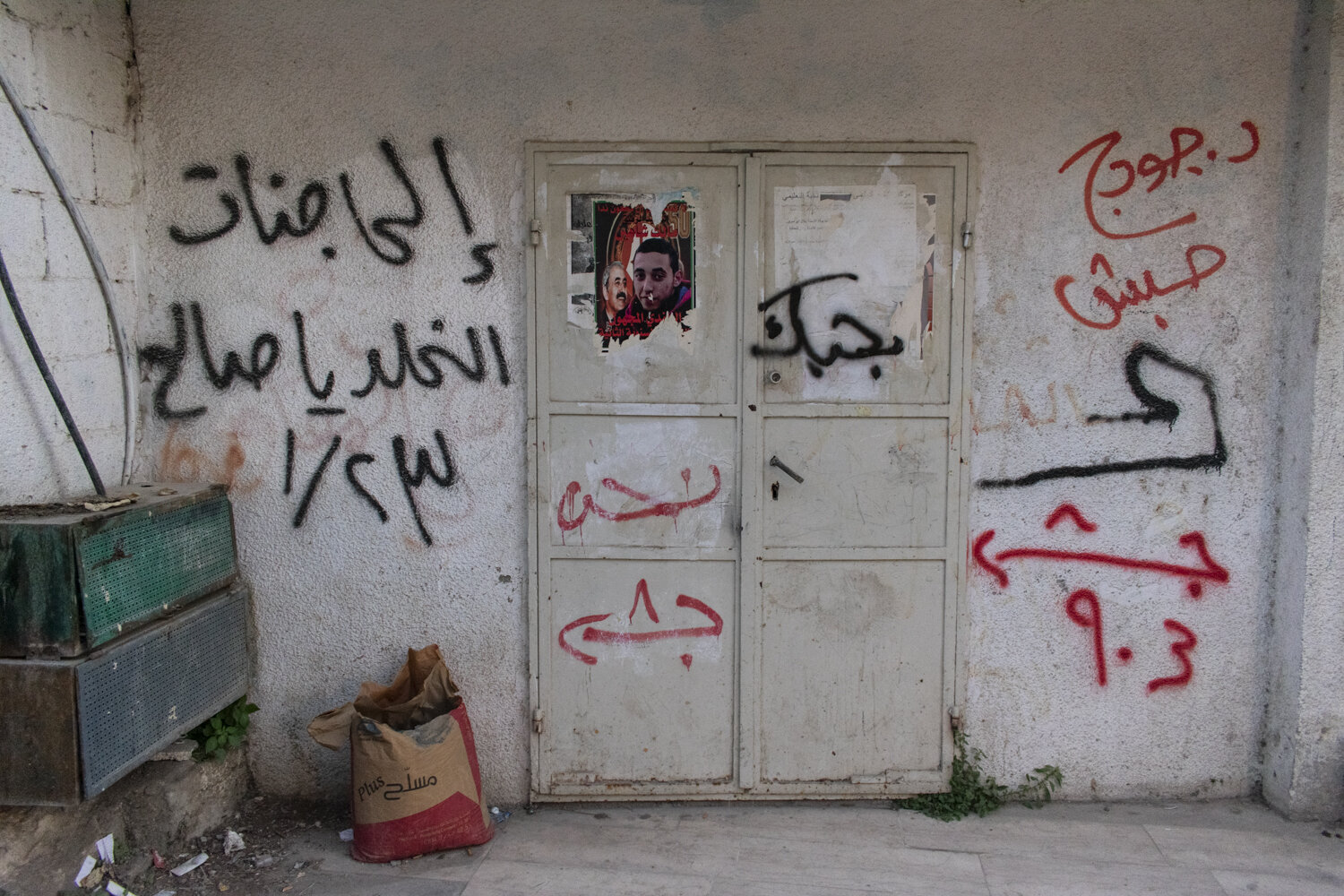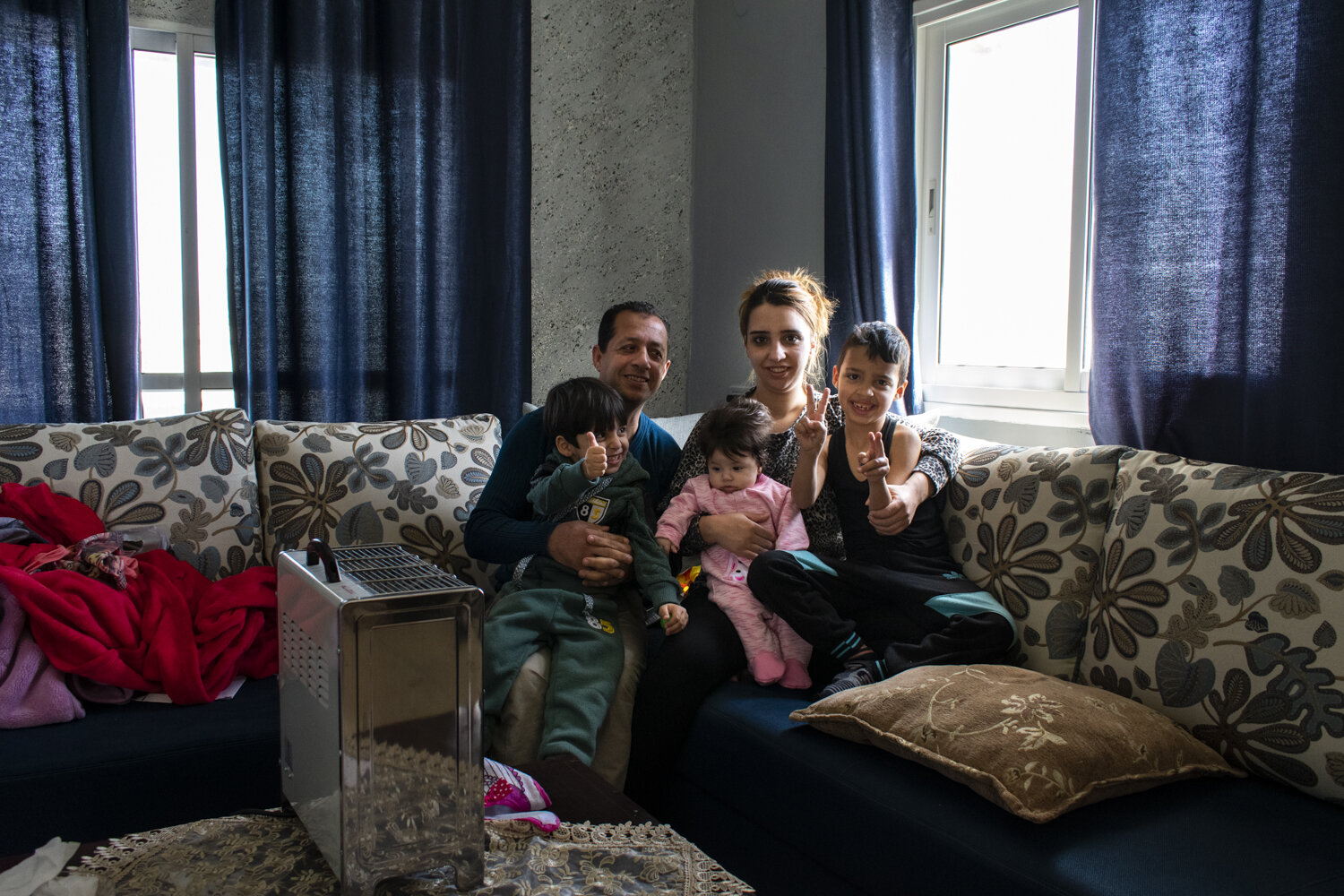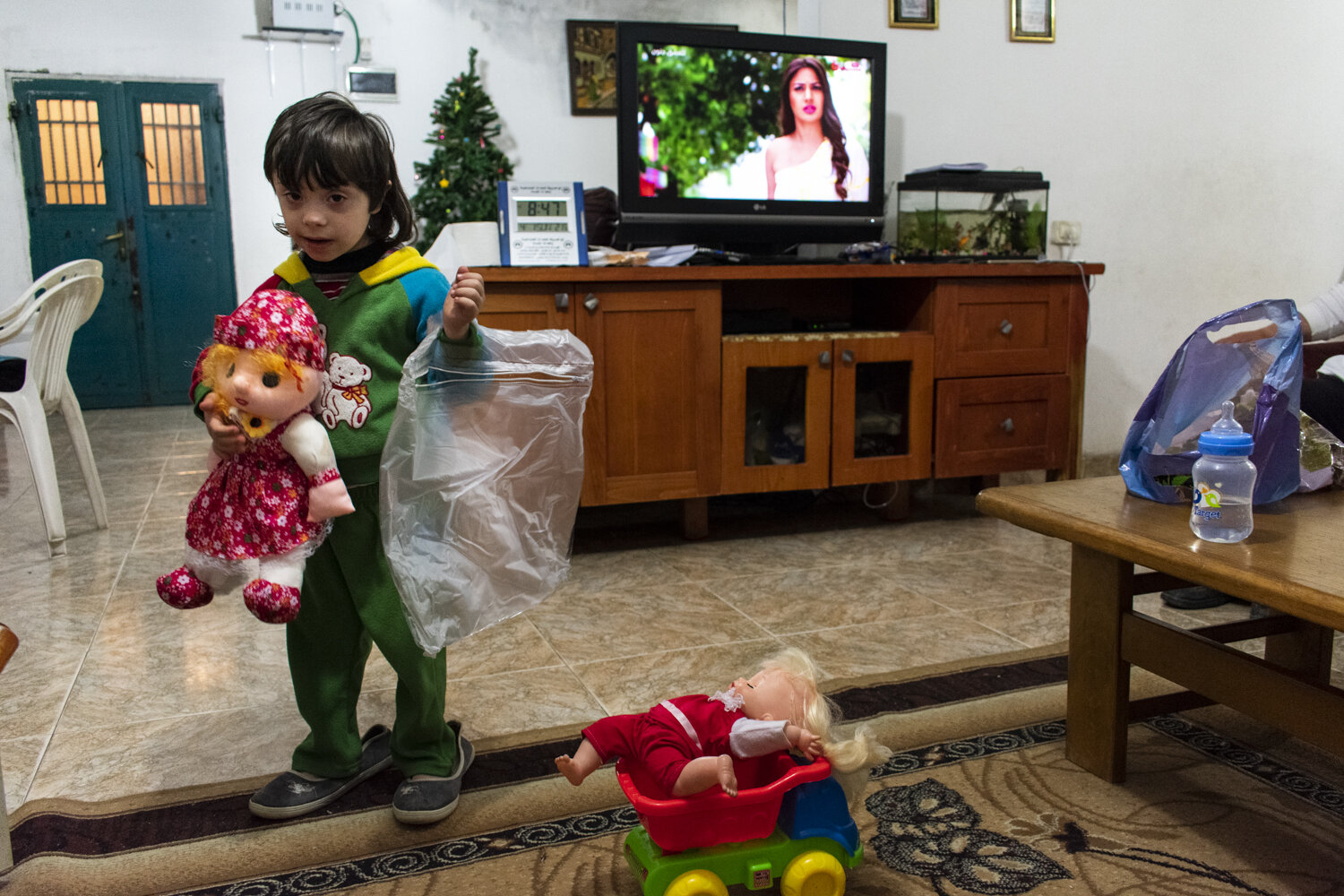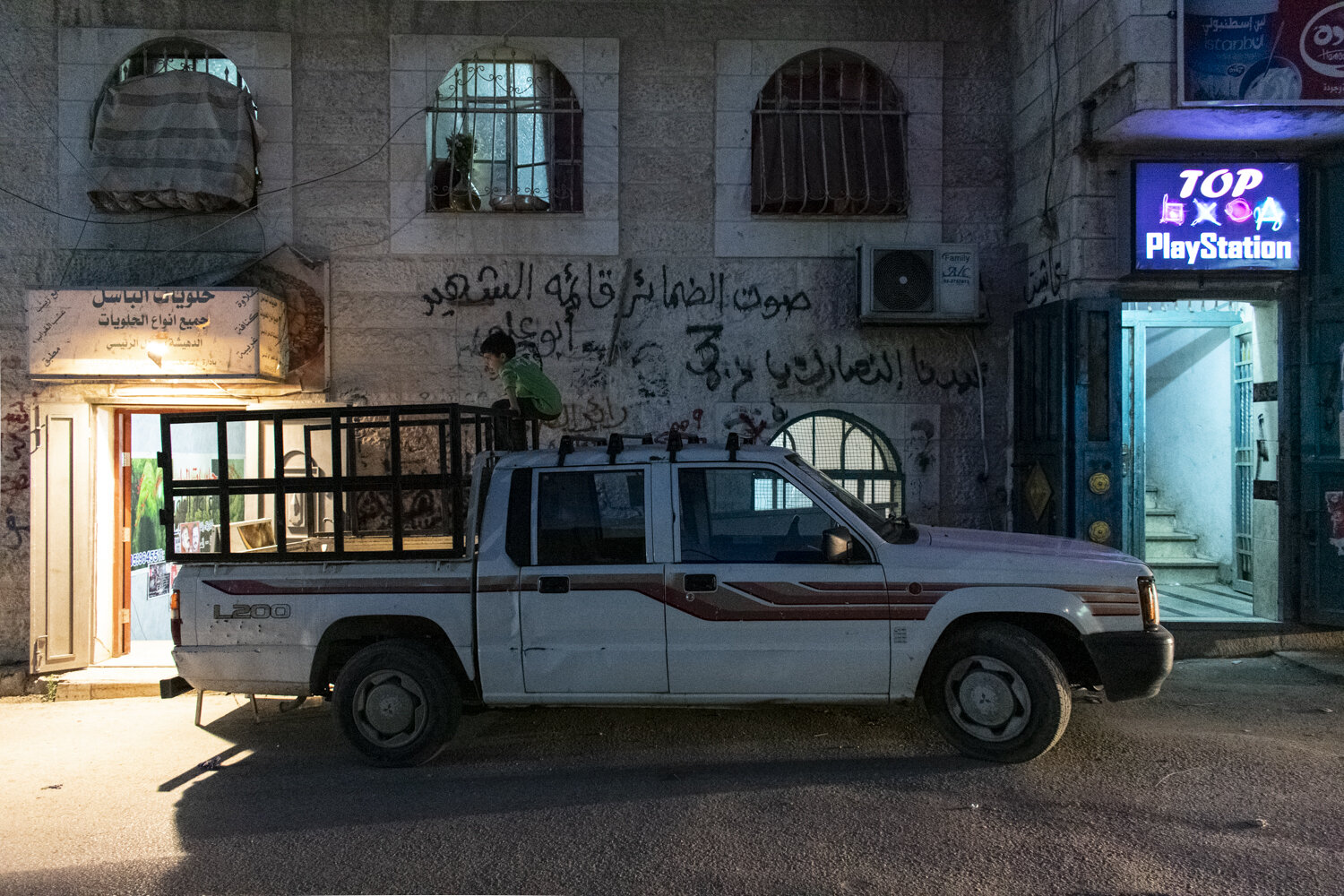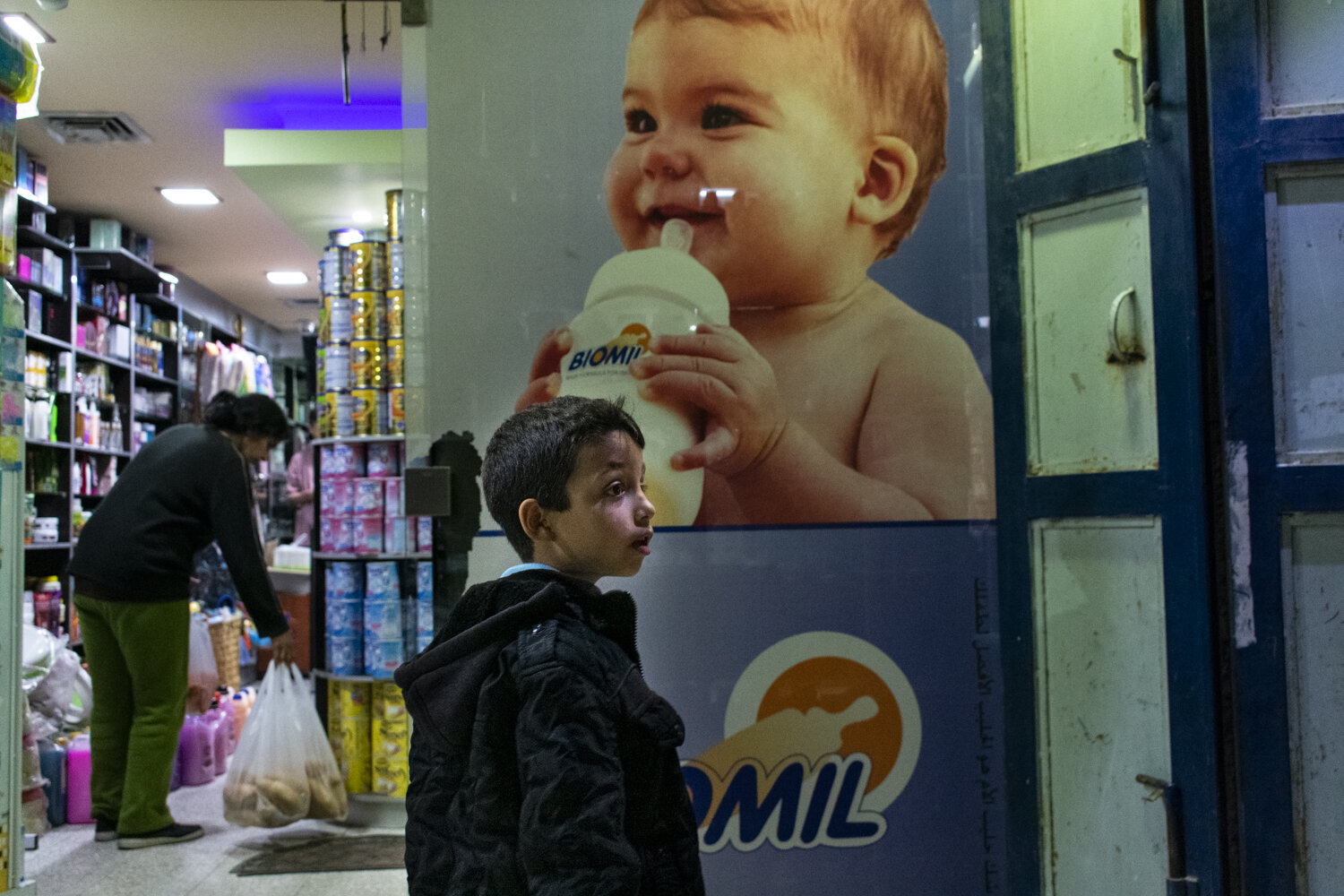Dheisheh Refugee Camp
This project focuses on a Palestinian family who live on the outskirts of Bethlehem in the second largest refugee camp called Dheisheh. After the Arab-Israeli war in 1948, the camp was created to provide temporary shelter for 3,000 Palestinians expelled from their native villages. Nevertheless, nearly seventy years after, the Israeli occupation continues, Palestinian refugees are still waiting for their right to return, and many have been forced to turn this temporary shelter into a home, and in 2018 Dheisheh had an estimated population of around 15,000. In many homes Palestinian families have a key hanging on their wall, or stored in a secret cupboard, with hope that they will be able to use it again and return. They key has become a Palestinian symbol of “Nakba”, which literally translates to “disaster” and is used to refer to the Palestinian exodus of 1948.
Israeli forces control water supplies in the West Bank and Gaza, and Palestinian homes have black tanks on the roof which are used to store water, and these are sometimes targeted by Israeli settlers and soldiers during attacks.
Over the decades, the refugee camps have seen the construction of brick houses, paved streets, opened shops and schools. Israeli police and army incursions happen frequently, and the houses in Dheisheh are not numbered, the streets are nameless and the houses are covered in pro-Palestinian street art. I stayed with Ibrahim, a 40-year old man and son of now a deceased refugee, his wife Aya and their three children. I stayed with them to try to understand the realities and struggles faced by Palestinian families in the West Bank. Ibrahim explained that on a daily basis he feels safe and knows most of the families in Dheisheh and their stories and that the biggest threat comes from the Israeli Security Forces, who have been known to conduct arrests and incursions inside the camp on a regular basis.
